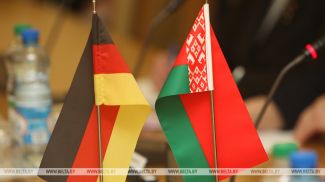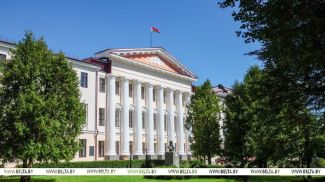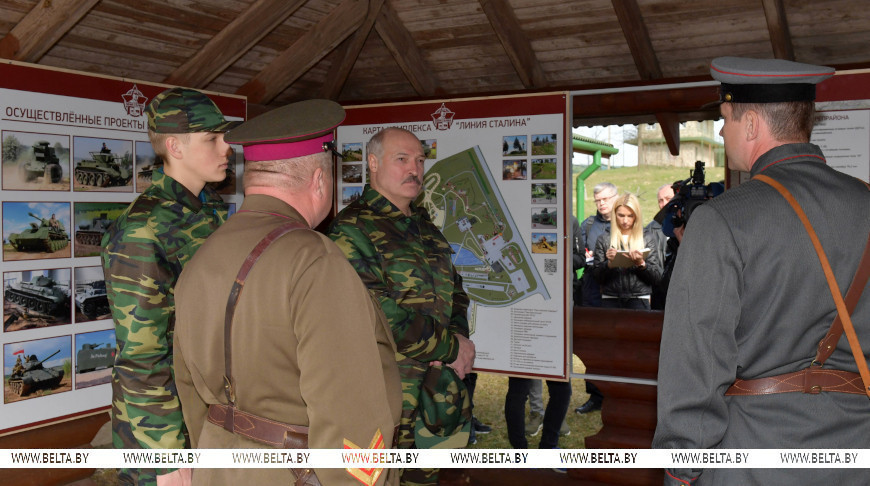
News of the story
"After the Fact: Lukashenko’s Decisions"
The opening of the historical and cultural complex Stalin's Line was attended by more than 10,000 people. Re-enactors prepared a grand military-theatrical reenactment Invasion. The Belarusian president was also present. The museum was created thanks to his decision. In this episode of BelTA’s YouTube project “After the Fact: Lukashenko’s Decisions” we will tell how Stalin's Line brings old hardware back to life. Why was the director of the museum criticized? What reenactments does the museum do on an improvised battlefield?





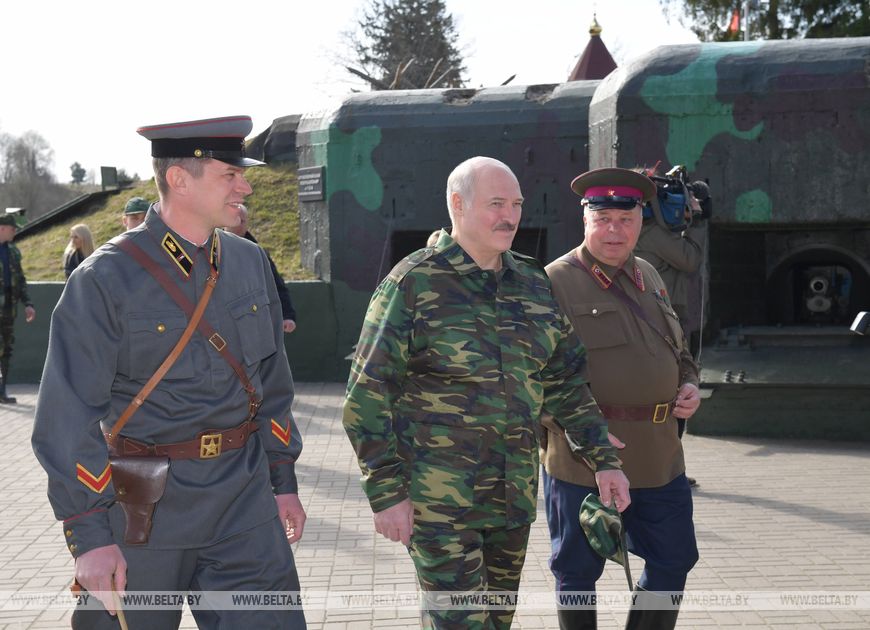

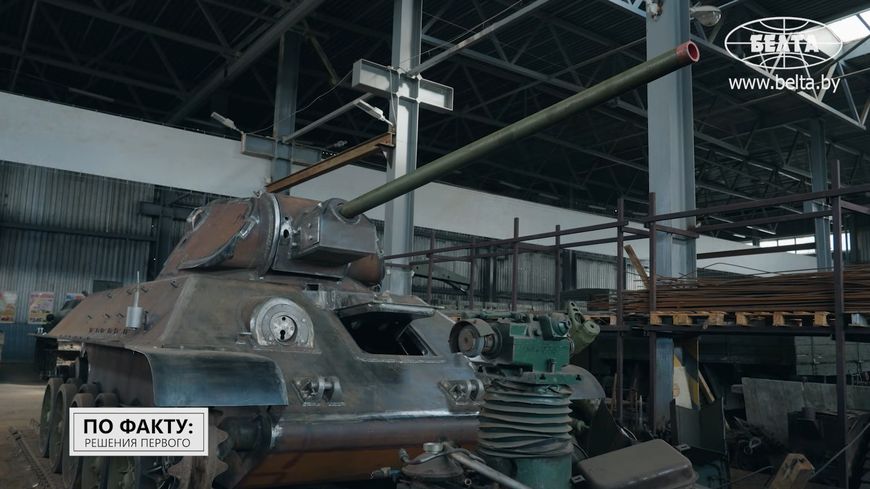
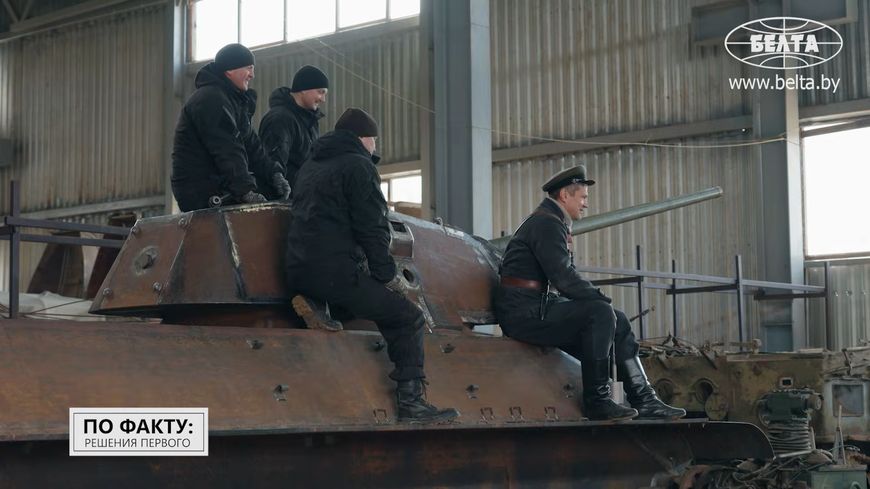
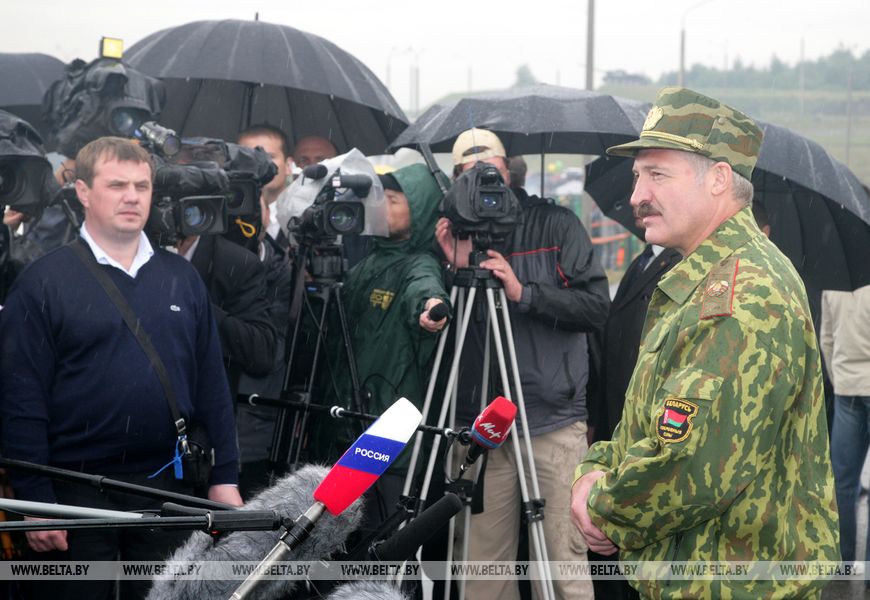
“It is a nationwide holiday, a recognized one. It speaks of our unity. The unity of the nation. No provocation can destroy it. Whatever one might think. There are actually such people in our country. Although there are few of them who do not like this holiday. You know all of them,” the president told journalists during his visit to Stalin’s Line Complex.
The organizers of reenactment shows have been repeatedly accused of military propaganda. But the message of such spectacular shows is the opposite. In fact, these are peaceful explosions. They are reenacted in order for people to see and remember how terrible war can be.
“We are currently preparing to celebrate the 80th anniversary of the Great Victory. We will reenact the final battles of the Great Patriotic War on the territory of Nazi Germany. The Battle of Berlin,” the director said.






“Once we did calculations, and it turned out that we have more equipment than a combat battalion. But only five specialists maintain the collection. Each vehicle requires batteries, fuel, and equipment checks,” Aleksandr Metla stressed.
Who maintains vehicles at the complex?


Where do tourists visiting Stalin's Line come from?
Every year, Stalin’s Line welcomes around 100,000 tourists, excluding those who visit the complex for free: people with disabilities, low-income individuals, conscript soldiers, and children under six. Many visitors come from abroad.
“We have flags probably from every country in the world. We have the tradition: when we welcome a delegation or people from a foreign country, we order the flag of the country. For example, until 2019, the United States ranked second after China in visitor numbers, which was quite surprising. People come, admire our culture and history. Government and people are two different dimensions,” the complex’s director noted.
Nowadays, the whole families visit the Stalin’s Line. Some are fascinated by the military equipment they have only seen in films and textbooks. Others are drawn to historical facts that seem distant but remain important to remember.

“When we started our activities, people were skeptical. They questioned the purpose: who needed this? At that time, military-patriotic education was not widely discussed. Former soldiers, including those who served in Afghanistan, understood the need to communicate with young people, but there was little support. People saw us as eccentrics, as those who are obsessed with war, still wanting to fight. Some even said to us: What more do you need? You are a colonel, you are retired. Why focus on military-patriotic education? War is the thing of the past,” Aleksandr Metla recalled how at first many people reacted to the idea to create such a complex and reenact battles there.
How the idea for Stalin’s Line complex came about
It all started in 2002. Aleksandr Metla and like-minded people set up the charitable foundation for assistance to internationalist soldiers Memory of Afghanistan. In turn the foundation set up the Soldiers of Victory club. Veterans and re-enactors were engaged in military-patriotic education of schoolchildren.

“At that time we were preparing to open a museum-pillbox of Stalin's Line in Zaslavl. The mayor of Zaslavl asked me to do a reenactment. We did it. Its script featured shooting with fascists to defend the pillbox.
This event was televised. The head of state got interested. Why there’s shooting in the city? We had to explain ourselves. Then he suggested putting up something similar for the 60th anniversary of the Great Victory. We offered the historical and cultural complex Stalin's Line as the venue,” Aleksandr Metla, Director of thehistorical and cultural complex Stalin's Line, founder and director of the Memory of Afghanistan charitable foundation, shared the story.

A bit of history. Stalin's Line was a defense line in the USSR. Its construction lasted from 1928 until the autumn of 1939. It consisted of fortified areas along the old western border of the USSR from the Karelian Isthmus to the shores of the Black Sea. In 1939-1940 the USSR incorporated a number of territories. The fortifications turned out to be in the rear. There was no need for them. Stalin's Line was disarmed. The historical and cultural complex was set up on the place of Minsk fortification.
Lukashenko’s instructions
The historical and cultural complex Stalin's Line was created in less than six months. The armed forces, city and regional authorities provided their assistance. There was a lot of work. There was a dump site on the place of the lake. By joint forces this large-scale project was brought to fruition.
“Aleksandr Grigoriyevich turned to me and said: Sasha, here's the land for you, here's the territory, make a good museum here. I said: yes, Comrade President. Culture Minister Gulyako criticized me for signing up to this. I told him I couldn't do otherwise. It was really his job to explain to the head of state that creating a good museum and making it financially viable is no small feat to achieve,” Aleksandr Metla recalled.

The president noted: the complex should be financially self-sufficient. We need to make it not only a monument to the feat of arms of the people, but also a popular tourist sight. This is exactly how things turned out to be. In 2005 Stalin's Line became a national construction project. However, it drew a lot of controversy because of the name.


“When we announced the name Stalin's Line we came under a lot of fire. I was summoned to the administration, to the ministries and told that the name would scare people away. I said: then how can we understand whether there was Stalin or not? Stalin's line was there. So what's the matter?” Aleksandr Metla noted.
What the authorities were accused of during the work on the complex
In April 2019, Aleksandr Lukashenko took part in a nationwide voluntary clean-up day at Stalin's Line. Oak trees were planted to mark the 75th anniversary of the liberation of Belarus from the Nazis, and pine trees - to honor the 30th anniversary of the withdrawal of the Soviet troops from Afghanistan. The president also spoke to the media. The head of state noted that when the historical and cultural complex was developed, there were many opponents of it, who accused the authorities of perpetuating the memory of Stalin.
“I did not give the complex this name in order to honor Stalin, although he also deserves it. I revived this place which is related to our history and which was, unfortunately, misunderstood at that time,” Aleksandr Lukashenko said.
Speaking about Stalin’s Line, the head of state said the complex was in great demand not only among people from the post-Soviet space. Children from Western Europe come here on excursions to see a display of both the wartime and modern hardware.

“We will continue developing this site in order to bring up true patriots able to defend themselves, their families, children and our country,” Aleksandr Lukashenko said.
How much time does it take to restore military hardware?
Specialists are restoring military hardware found during excavations and also working on their own projects. Each project takes up about nine months to implement. A T-34 tank of the first editions has recently been presented to the media. Both the parts of the war tanks found during excavations and also newly made elements were used to put it back to life. As for the turret, the decision was made to use a rare gun.
“It was decided to place a ZIS-2, not an L-11 or an F-34. That is planned work. It is mostly the remnants of equipment that we find and repair. Some hardware is made from scratch,” Aleksandr Metla, Director of the historical and cultural complex Stalin's Line, said.

Not long ago, a 152-millimeter gun KV-2 was found in Vitebsk Oblast. The Internal Affairs Ministry donated it to Stalin’s Line. The gun was so powerful that German tanks were blown to pieces.
“It was one of the world’s most powerful guns installed on a tank. It used reduced powder charges. It was also forbidden to fire in motion. Otherwise, the undercarriage and the gearbox could be broken,” the director of the historical and cultural complex Stalin's Line said.


The armored train was made according to the drawings. Belarusian Railways helped with the running gear and gave us a platform and two locomotives. One was kept in its original form for exposition. The second one was made armored.
“It is operational. We also hold reenactment shows here. Our big dream is to build a 1km railroad someday, and connect it to the main reenactment field. It could feature an armored train, the hardware we restored,” said Aleksandr Metla.
How will Stalin’s Line celebrate Victory’s 80th anniversary?
In July 2008, the president attended the reenactment show at Stalin's Line. Some 40,000 people came to see the performance. Such big numbers of participants were a response to those who had organized a provocation several days earlier: an explosion near the Minsk Hero City Memorial during the Independence Day celebrations left dozens of people injured on the night of 3-4 July. But the provocateurs failed to frighten the residents and guests of the Belarusian capital.

The organizers of reenactment shows have been repeatedly accused of military propaganda. But the message of such spectacular shows is the opposite. In fact, these are peaceful explosions. They are reenacted in order for people to see and remember how terrible war can be.
“We are currently preparing to celebrate the 80th anniversary of the Great Victory. We will reenact the final battles of the Great Patriotic War on the territory of Nazi Germany. The Battle of Berlin,” the director said.






Stalin’s Line Complex houses hundreds of military equipment exhibits, many of which remain operational and actively participate in reenactments.
“Once we did calculations, and it turned out that we have more equipment than a combat battalion. But only five specialists maintain the collection. Each vehicle requires batteries, fuel, and equipment checks,” Aleksandr Metla stressed.
Who maintains vehicles at the complex?
Stalin’s Line has four specialists who have been working on restorations for nearly 12 years. Most of the vehicles are displayed outdoors, while only fully restored models are housed in hangars.
Belarus' unpredictable weather often presents challenges for maintaining
these vehicles. Keeping a tank operational is far more demanding than
servicing a compact city car. The complex relies on sponsorships.
Various enterprises and organizations also provide support.


“The head of state has provided support in the preparations to celebrate the 80th anniversary of the Great Victory. The Minsk Oblast Executive Committee and the Minsk District Executive Committee are also actively involved. We are very grateful to the head of state. He is a very busy man, and has millions of things to attend to. Nevertheless, he responded to our letter and issued a relevant resolution,” Aleksandr Metla said.
Where do tourists visiting Stalin's Line come from?
Every year, Stalin’s Line welcomes around 100,000 tourists, excluding those who visit the complex for free: people with disabilities, low-income individuals, conscript soldiers, and children under six. Many visitors come from abroad.
“We have flags probably from every country in the world. We have the tradition: when we welcome a delegation or people from a foreign country, we order the flag of the country. For example, until 2019, the United States ranked second after China in visitor numbers, which was quite surprising. People come, admire our culture and history. Government and people are two different dimensions,” the complex’s director noted.
Nowadays, the whole families visit the Stalin’s Line. Some are fascinated by the military equipment they have only seen in films and textbooks. Others are drawn to historical facts that seem distant but remain important to remember.

“When we started our activities, people were skeptical. They questioned the purpose: who needed this? At that time, military-patriotic education was not widely discussed. Former soldiers, including those who served in Afghanistan, understood the need to communicate with young people, but there was little support. People saw us as eccentrics, as those who are obsessed with war, still wanting to fight. Some even said to us: What more do you need? You are a colonel, you are retired. Why focus on military-patriotic education? War is the thing of the past,” Aleksandr Metla recalled how at first many people reacted to the idea to create such a complex and reenact battles there.






